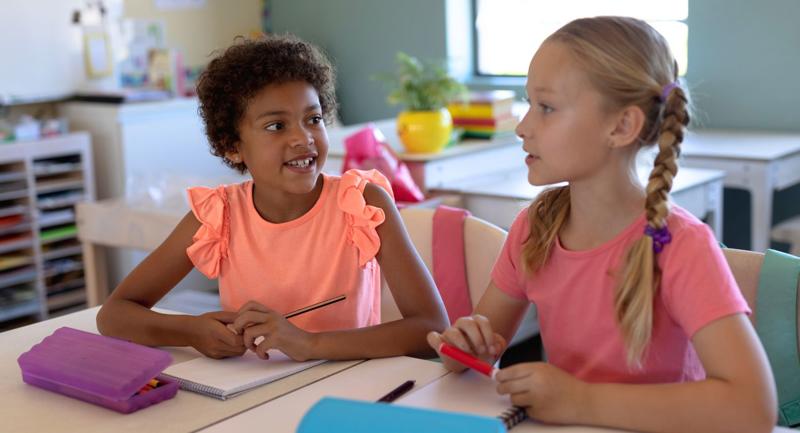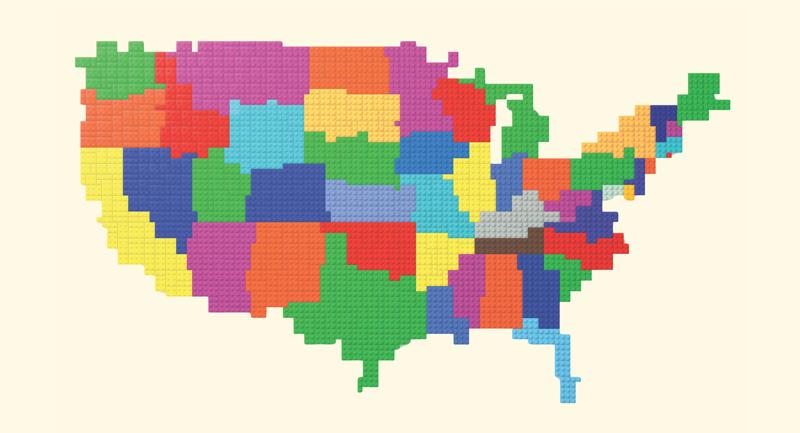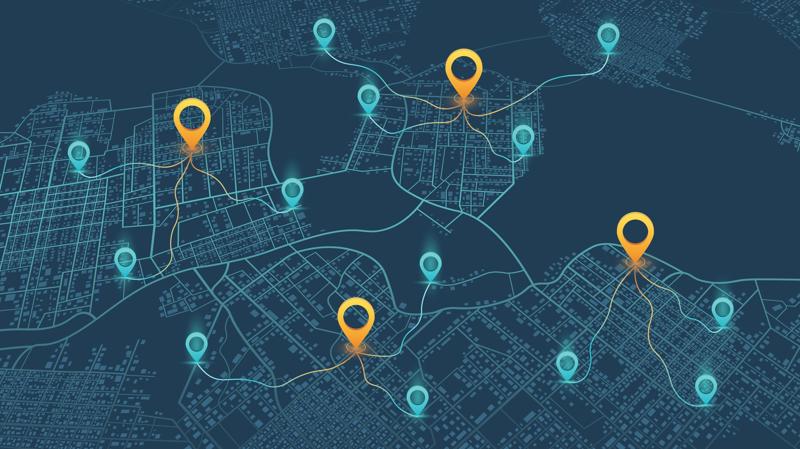February 1, 2018
•
5 min (est.)•
Vol. 75•
No. 5Show & Tell: A Video Column / A Map for Meaningful Learning
Kids need a clear destination, success criteria, and frequent feedback.
Both of us recall times in our childhoods when we were asked to do yard work. This often involved mowing the lawn. Parents had a clear sense of what success looked like: Mow in straight lines, overlapping a bit so as not to leave strips of longer grass, and don't mow things you're not supposed to mow. Some important criteria for the job were related to safety: long pants and sturdy shoes. The mower needed to be hosed off before being put away. These quality indicators, in our parents' minds, contributed to the success of the project.
Let's shift our attention to the language of education and ask which of our parents' quality indicators for lawn mowing might be analogous to learning intentions and which to success criteria. There's value in utilizing both learning intentions and success criteria in instruction, as they contribute to teacher clarity, which has an effect size of 0.75 in terms of lifting achievement. Most of us understand that learning intentions and success criteria are related, but we may not be able to articulate the characteristics of each. Let's untangle these terms, making it easier to use both these elements to measure student success.
First, consider a learning intention (also called a learning target, goal, objective, or purpose). This is what you want students to know and be able to do by the end of one or more lessons. Think of the GPS many of us use on our smartphones or in our cars. We know where we want to go, so we punch in the address. Similarly, a learning intention is the student's destination.
Now consider how you actually get there. A GPS uses turn-by-turn instructions to bring you to your destination. When you make an error, the system recalculates based on your current position and puts you back on track. But think about what it doesn't do. It doesn't give feedback on all the other things happening simultaneously. The GPS doesn't congratulate you for not being annoyed because you missed a turn or commend you on your excellent braking. The feedback focuses on one thing: your progress toward a destination—that's the success criteria in this system.
A GPS offers feedback about your progress that gets you to the destination; its feedback is also, ultimately, how you assess your success, determining whether you arrived at the desired place. Like a GPS, success criteria are both formative and summative.
In our lawn mowing example, the established learning intentions articulated the goal (mow evenly without damaging plants and trees) and the success criteria included the quality of the job, safety guidelines, and expectations for storage. Clear success criteria gave our parents a mechanism for providing feedback. Of course, they didn't wait until the job was complete to give feedback. They monitored progress and stopped us when needed so we could make corrections.
So how do we measure student success? By naming the destination and using quality indicators so both educator and student can gauge progress toward it.
The learning intentions you identify for students reflect your knowledge of the subject matter and how to teach it so that students learn. Conveying the learning intention is the first step, and in many ways, more cognitively demanding than developing success criteria. Without a clear learning destination in mind, lessons wander, and students become confused and frustrated. Mind you, a bit of confusion and frustration can be a good thing. But when you hear a student say, "Just tell me what you want me to do," you know the learning intention wasn't clear.
Teachers convey learning intentions to students in various ways. Establishing purpose is one effective method. Teachers at the school where we work, Health Sciences High in San Diego, kick off lessons by discussing what will be accomplished. For instance, mathematics teacher Joseph Assof's purpose for one day included goals for content (to use our understanding of linear functions as a foundation for mathematical modeling with average rate of change), language (to use familiar terms to build greater understanding of rates of change), and social learning (to enrich our lesson by participating in whole-class discussions). Our teachers don't just post such purpose statements, they use them as fodder for talking about learning intentions and give students chances to ask clarifying questions.
In the video accompanying this column, Clearview Elementary teacher Melissa Noble conveys the learning intentions to her students as they write about characterization in a short story. Note that she also provides success criteria, including a rubric of what students should do as they write (RACER, standing for Restate, Answer, Cite, Explain, Revise) and tells them, "[Here's] how you as the learner are going to understand that you've been successful."
Success criteria provide a means for teachers and students to utilize feedback specifically oriented to the learning intentions. They clarify how a task or assignment will be judged. One common method of articulating success criteria is "I can" statements, such as "I can point to the title page of the book."
These statements are of lesser value in isolation. Just like a GPS, you're not going to get far on your journey if you only get the first direction. Consider this "I can" statement from a history lesson: "I can identify primary and secondary sources." Identifying sources is only one step toward the learning intention; students also need to be able to use these sources to analyze historical decisions, determine bias, and so on. For this reason, many teachers use rubrics to articulate a constellation of quality indicators. Another type of success criteria is a list of deliverables for a project—with quality indicators for each item to make the list more than a simple checklist.
Regardless of how we convey success criteria, their true value can't be realized if there's no formative feedback. Success criteria give students a means for comparing their present performance against the destination. Formative feedback allows students to make adjustments when they're off-track and accelerate their progress as they gain momentum.
This means dedicating time for students to self-assess. Discussion with peers or the teacher may precede this self-assessment, but judgment should ultimately rest with the learner. You might ask students to assess the progress of their project using the rubric as the success criteria by having them highlight relevant cells of the rubric and attach their work thus far. Better yet, have students return periodically to particular rubrics to compare their work from earlier in the year to more recent efforts. Students can look at their results on a practice test administered at the mid-point of the unit, for instance, to understand what they've mastered and what requires more attention.
Learning intentions and success criteria contribute to teacher clarity and foster a shared definition of quality work. But these efforts are stymied if feedback opportunities are scarce. It's essential to use feedback to guide students toward internalizing success criteria so they can measure their own success.
End Notes
•1 Hattie, J. (2012). Visible learning for teachers: Maximizing impact on learning. New York: Routledge.
•2 Learning intentions aren't standards, which are too broad for student use, but bite-sized chunks that lead to the outcomes defined by standards.
•3 Fisher, D., & Frey, N. (2011). The purposeful classroom: How to structure lessons with learning goals in mind. Alexandria,VA: ASCD.
•







